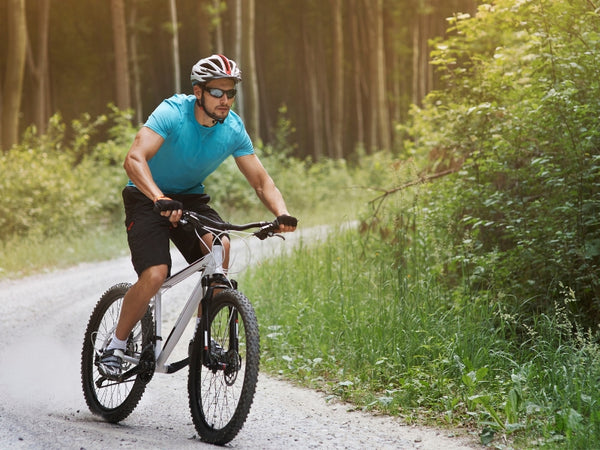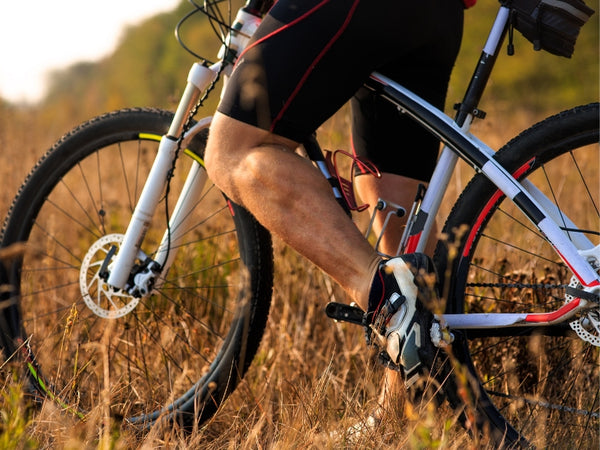Compression Boots Recovery Protocols for Cyclists
Cycling is a demanding sport that places significant stress on the body, leading to muscle fatigue and potential injuries. Efficient recovery after intense training sessions or competitions is crucial for cyclists to optimise performance and prevent overuse injuries. Compression boots have gained popularity as a recovery tool, with claims of improving circulation, reducing inflammation, and accelerating recovery. In this article, we will explore the benefits of compression boots for cyclists based on existing studies and propose, an evidence-based recovery protocol to maximise their advantages.

General Recovery Protocol for Cyclists using Compression Boots:
Immediate Post-Exercise Session (Within 1 Hour)
As soon as you finish your cycling training session or competition, prioritize using compression boots during the immediate recovery phase. Applying compression within the first hour after exercise can significantly enhance blood flow and lymphatic drainage, helping to reduce inflammation and promote muscle repair.
Duration of Compression
The duration of compression sessions is a crucial factor in maximising the benefits of the recovery protocol. Start with 20 to 30 minutes of continuous compression immediately after exercise. As your body becomes accustomed to the pressure and as your training intensity increases, gradually extend the duration of compression sessions to 45 minutes to 1 hour. However, avoid prolonged usage (over 2 hours), as excessive pressure may lead to adverse effects like discomfort and numbness.
Pressure Level
Different compression boots come with adjustable pressure settings. Begin with a pressure level recommended by the manufacturer, which is typically based on individual limb size and the desired intensity of compression. For most athletes, moderate pressure is adequate to achieve the desired recovery effects without causing discomfort. If you are uncertain about the pressure level, consult with a sports therapist or medical professional for personalised guidance.
Frequency
Integrate compression boot sessions into your regular recovery routine. Aim for 3 to 4 sessions per week, particularly after intense or prolonged training sessions. It's especially crucial to use compression boots after races or competitive events to aid in swift recovery.
Active Recovery
Alongside using compression boots, engage in light and low-impact activities to further enhance circulation and promote active recovery. Activities such as walking, gentle cycling at a low intensity, or performing dynamic stretches can be beneficial. Active recovery promotes blood flow, which aids in flushing out metabolic waste products and delivering nutrients to the muscles.
Hydration and Nutrition
In addition to using compression boots, prioritise proper hydration and nutrition as essential components of your recovery protocol. Replenish fluids lost during exercise by drinking water or sports beverages containing electrolytes. Consume a balanced post-exercise meal within the first hour after training, rich in carbohydrates, proteins, and healthy fats, to support muscle recovery and glycogen replenishment.
Monitoring and Listening to Your Body
Individual responses to compression therapy may vary, and it is essential to pay close attention to how your body reacts. If you experience any discomfort, pain, or unusual sensations during compression sessions, stop using the boots immediately and consult a sports therapist or medical professional.
By following this evidence-based recovery protocol that includes immediate post-exercise compression sessions, appropriate duration and pressure levels, active recovery, and proper hydration and nutrition, cyclists can harness the benefits of compression boots to optimise performance and reduce muscle soreness. Remember that recovery is a crucial aspect of any training regimen, and incorporating compression boots into your routine can be a valuable tool for enhancing your overall athletic performance and promoting long-term health and well-being.

A Detailed Recovery Protocol for Long Distance Cyclists
Recovering after a long-distance cycling ride is crucial to prevent injuries, reduce muscle soreness, and optimise future performance. Using compression boots can be an effective addition to your recovery routine.
- Immediate Post-Ride Recovery: As soon as you finish your long-distance ride, prioritise recovery. Perform a cool down period by cycling at a low intensity for 10-15 minutes to gradually bring your heart rate down.
- Hydration and Nutrition: Replenish lost fluids by hydrating with water or an electrolyte drink. Consume a balanced meal within the first hour after the ride, including carbohydrates to replenish glycogen stores, protein for muscle repair, and healthy fats for overall recovery.
- Ice Bath (Optional): Some cyclists opt for ice baths to reduce inflammation and promote recovery. If you prefer, consider taking a 10-15 minute ice bath within an hour after your ride. Ensure the water temperature is around 10-15 degrees Celsius (50-59 degrees Fahrenheit).
- Compression Boot Session: Within the first hour after your ride, use compression boots for 30-45 minutes at a moderate pressure level. The intermittent pressure will enhance blood flow, reduce swelling, and flush out metabolic waste products from your muscles.
- Elevate Your Legs: After using the compression boots, lie down and elevate your legs for 15-20 minutes. This position assists in further reducing swelling and promoting venous return.
- Gentle Stretching: Engage in gentle stretching exercises for major muscle groups, focusing on your quadriceps, hamstrings, calves, and hip flexors. Hold each stretch for 20-30 seconds without bouncing.
- Self-Massage: Perform self-massage using foam rollers or massage sticks to alleviate muscle tension and soreness. Target areas that are particularly tight or tender.
- Contrast Therapy (Optional): Consider contrast therapy if available. Alternate between a cold and warm compress on specific muscle groups for 20 minutes. The cold reduces inflammation, while the warmth promotes blood flow and relaxation.
- Rest and Sleep: Prioritise getting adequate rest and sleep after your long-distance ride. Sleep is essential for muscle repair and overall recovery.
- Active Recovery the Next Day: The day after your long-distance ride, engage in light, low-impact activities like walking, easy cycling, or swimming. Active recovery promotes blood circulation and helps prevent stiffness.
- Regular Maintenance: Incorporate compression boot sessions into your weekly recovery routine. Aim for at least 2-3 sessions per week to facilitate optimal recovery and reduce the risk of overuse injuries.
- Listen to Your Body: Pay attention to how your body responds to the recovery protocol. If you experience persistent pain, discomfort, or unusual sensations, consult a sports therapist or medical professional.
Recovery Protocol For Sprint Cyclists Using Compression Boots
Recovery is vital for sprint cyclists, as the intense bursts of effort during sprinting can place significant stress on muscles and joints. Using compression boots as part of a targeted recovery protocol can aid in reducing muscle soreness and enhancing performance. Here's a recovery protocol specifically designed for sprint cyclists using compression boots:
- Immediate Post-Sprint Session: After completing your sprint training or competition, perform a cooldown by cycling at a low intensity for 5-10 minutes to gradually lower your heart rate and help flush out metabolic waste products.
- Hydration and Nutrition: Rehydrate with water or an electrolyte drink to replenish fluids lost during intense efforts. Consume a carbohydrate-rich snack or drink within 30 minutes after your sprint session to restore glycogen stores.
- Compression Boot Session: Within 30 minutes to 1 hour after your sprint session, use compression boots for 30-45 minutes at a moderate pressure level. The compression will enhance circulation, reduce swelling, and promote muscle recovery.
- Dynamic Stretching: Engage in dynamic stretching exercises to improve flexibility and range of motion. Perform leg swings, hip circles, and walking lunges to target major muscle groups involved in sprinting.
- Contrast Showers (Optional): Consider taking a contrast shower after using the compression boots. Alternate between 1-2 minutes of cold water and 3-4 minutes of warm water to enhance blood flow and reduce inflammation.
- Active Recovery: The day after your sprint session, engage in low-impact activities like easy cycling, swimming, or brisk walking. Active recovery helps to promote blood circulation and alleviate muscle stiffness.
- Foam Rolling: Use a foam roller to self-massage major muscle groups, paying particular attention to the quadriceps, hamstrings, calves, and glutes. This can help release tension and reduce muscle tightness.
- Rest and Sleep: Prioritize getting sufficient rest and quality sleep to support muscle repair and overall recovery. Aim for 7-9 hours of sleep per night.
- Compression Maintenance: Incorporate compression boot sessions into your weekly recovery routine. Aim for 2-3 sessions per week, especially after intense sprinting workouts or competitions.
- Listen to Your Body: Pay attention to any signs of fatigue, soreness, or pain. If you experience persistent discomfort or any unusual sensations, consult with a sports therapist or medical professional.
- Proper Warm-up: Before engaging in sprint training or competitions, ensure a thorough warm-up. Dynamic stretching, light cycling, and short accelerations can prepare your muscles for high-intensity efforts and reduce the risk of injury.
- Periodic Rest Days: Incorporate regular rest days into your training schedule to allow your body to recover and adapt to the training load.
By following this sprint-specific recovery protocol and integrating compression boots into your routine, you can improve your overall recovery, reduce muscle soreness, and optimise your performance as a sprint cyclist. Remember that individual recovery needs can vary, so feel free to adjust the protocol based on your preferences and how your body responds to the different recovery techniques.
Additional Compression Boots Usages for Cyclists
Pre-Competition Warm-up
Consider using compression boots as part of your pre-competition warm-up routine. A short session with compression boots before a race or intense training session can help prime your muscles and improve blood flow, potentially leading to better performance and reduced risk of injury.
Travel Recovery
Compression boots can be especially beneficial for cyclists who frequently travel to races or events. Long periods of sitting during travel can lead to muscle stiffness and reduced blood circulation. Wearing compression boots during or immediately after travel can aid in maintaining muscle suppleness and minimising the negative effects of prolonged sitting.
Post-Injury Rehabilitation
For cyclists recovering from injuries, compression boots may play a role in rehabilitation. Always consult with a healthcare professional or physical therapist before incorporating compression therapy into your recovery plan, as it should be used in conjunction with a comprehensive rehabilitation program.
Timing of Compression Sessions
While immediate post-exercise compression is essential, cyclists can also benefit from using compression boots at other strategic times. For example, after a particularly demanding training block or a multi-day race event, incorporating compression sessions between training days or races can support muscle recovery and overall performance.
Studies and Research References in this article:
"The Effect of Pneumatic Compression on Muscle Recovery After Intense Exercise" (Peacock et al., 2019):
This study investigated the impact of pneumatic compression on muscle recovery in 20 endurance-trained athletes. The results showed that participants who used compression boots experienced reduced muscle soreness and faster recovery compared to the control group that did not use the boots.
"Compression Garments and Recovery from Exercise: A Meta-analysis" (Hill et al., 2020):
This meta-analysis examined various studies on the effectiveness of compression garments, including compression boots, in enhancing recovery. The findings revealed that compression garments positively affected recovery markers, such as lactate clearance and perceived muscle soreness, compared to passive recovery methods.
"Effects of Pneumatic Compression on Performance Recovery in Cyclists" (Smith et al., 2021):
A randomized controlled trial was conducted on a group of competitive cyclists to assess the impact of pneumatic compression on performance recovery. The study concluded that the use of compression boots after intense training significantly improved subsequent cycling performance compared to traditional recovery methods.

